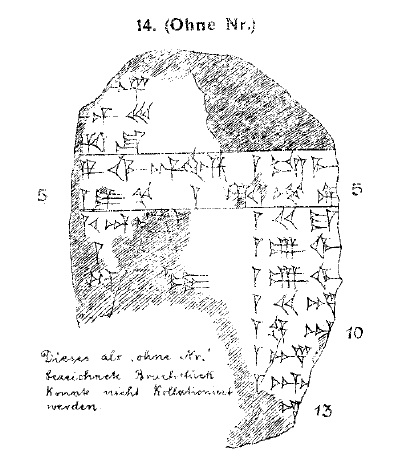Rimush of Assyria on:
[Wikipedia]
[Google]
[Amazon]
 Rimush or Rīmu ''š inscribed m''ri-mu-u'' 'š''on the only variant
Rimush or Rīmu ''š inscribed m''ri-mu-u'' 'š''on the only variant
 Rimush or Rīmu ''š inscribed m''ri-mu-u'' 'š''on the only variant
Rimush or Rīmu ''š inscribed m''ri-mu-u'' 'š''on the only variant List of Assyrian kings
The king of Assyria (Akkadian: ''Išši'ak Aššur'', later ''šar māt Aššur'') was the ruler of the ancient Mesopotamian kingdom of Assyria, which was founded in the late 21st century BC and fell in the late 7th century BC. For much of its ear ...
on which he appears, was the ruler of Assyria
Assyria ( Neo-Assyrian cuneiform: , romanized: ''māt Aššur''; syc, ܐܬܘܪ, ʾāthor) was a major ancient Mesopotamian civilization which existed as a city-state at times controlling regional territories in the indigenous lands of the ...
or perhaps just the part centered on Ekallatum Ekallatum ( Akkadian: 𒌷𒂍𒃲𒈨𒌍, URUE2.GAL.MEŠ, Ekallātum, "the Palaces") was an ancient Amorite city-state and kingdom in upper Mesopotamia. The exact location of it has not yet been identified, but it is thought to be located somewher ...
, a successor to and probably a descendant of Shamshi-Adad I
Shamshi-Adad ( akk, Šamši-Adad; Amorite: ''Shamshi-Addu''), ruled 1808–1776 BC, was an Amorite warlord and conqueror who had conquered lands across much of Syria, Anatolia, and Upper Mesopotamia.Some of the Mari letters addressed to Shamsi-Ad ...
, although the exact relationship is uncertain. He reigned sometime during the middle of the 18th century BC.
Biography
Neither the ''Khorsabad'' nor ''SDAS'' copies of the Assyrian Kinglist, the only lists whose earliest part is still intact, include any successors of Shamshi-Adad I’s son and heirIshme-Dagan I
Ishme-Dagan I ( akk, Išme-Dagān, script=Latn, italic=yes) was a monarch of Ekallatum and Assur during the Old Assyrian period. The much later Assyrian King List (AKL) credits Ishme-Dagan I with a reign of forty years; however, it is now known fr ...
, who had been ousted by Hammurabi
Hammurabi (Akkadian: ; ) was the sixth Amorite king of the Old Babylonian Empire, reigning from to BC. He was preceded by his father, Sin-Muballit, who abdicated due to failing health. During his reign, he conquered Elam and the city-states ...
. The fragmentary list known as KAV 14 (pictured) gives the sequence Shamshi-Adad, Ishme- agān u-Ashkur, then Rimu-˹x˺ before skipping to the 54th ruler, Shu-Ninua
Shu-Ninua or ŠÚ- or Kidin-Ninua, inscribed mŠÚ-URU.AB x ḪA,''Khorsabad Kinglist'', tablet IM 60017 (excavation nos.: DS 828, DS 32-54). ii 24, 26, 28 and 35,''SDAS Kinglist'', tablet IM 60484, ii 20, 21, 22 and 27. the 54th king to appear on ...
. There may be sufficient space to insert a successor to Rimudh (Asinum Asinum was possibly a king of Assyria during the 18th century BC, and a grandson of Shamshi-Adad I. He was overthrown by Puzur-Sin because he was of Amorite
The Amorites (; sux, 𒈥𒌅, MAR.TU; Akkadian: 𒀀𒈬𒊒𒌝 or 𒋾𒀉𒉡𒌝/ ...
?) on the end of the line his name is given. As the group falls within a section separated by lines from the rest of the list and the first three are known from other sourcesFrom correspondence at Mari. to be related as father, son and grandson, it is assumed that the four or five names form a dynasty.
Rimush would appear to be named for the son of the legendary king Sargon of Akkad, perhaps reflecting the extent to which Shamshi-Adad and his successors identified with this ancient prestigious dynasty, although the earlier Rimush
Rimush (or Rimuš, ''Ri-mu-uš'') was the second king of the Akkadian Empire. He was the son of Sargon of Akkad and Queen Tashlultum. He was succeeded by his brother Manishtushu, and was an uncle of Naram-Sin of Akkad. Rimush reported having a s ...
was apparently assassinated by his own courtiers “with their seals,” according to a liver-omen of the monumental Bārûtu series, a somewhat ignominious end. The events resulting in the demise of the dynasty are witnessed in only one inscription, that of Puzur-Sin Puzur-Sin was an Assyrian king in the 18th century BC, during the Old Assyrian period. One of the few known Assyrian rulers to be left out of the ''Assyrian King List'', Puzur-Sin was responsible for ending the rule of the dynasty of Shamshi-Adad I ...
, who boasted of overthrowing the son of Asīnûm, descendant of Šamši-Adad, whose name has not been preserved. This may have been Rīmuš, or if Asīnû followed him, perhaps his grandson. The result was apparently turmoil as a rapid succession of seven usurpers took power, each reigning briefly before being overthrown.
Inscriptions
References
{{DEFAULTSORT:Rimush of Assyria 18th-century BC Assyrian kings